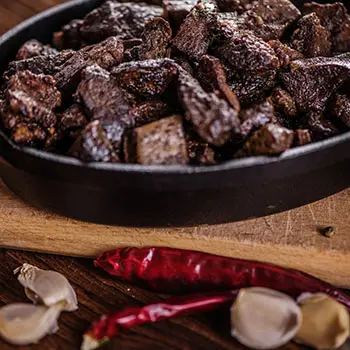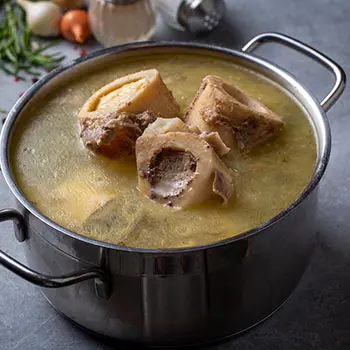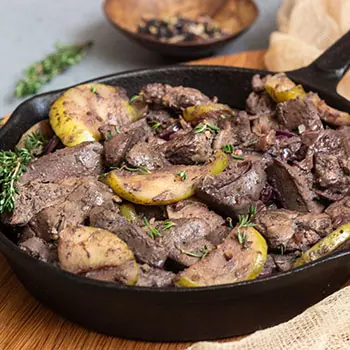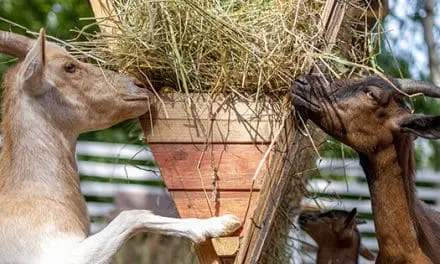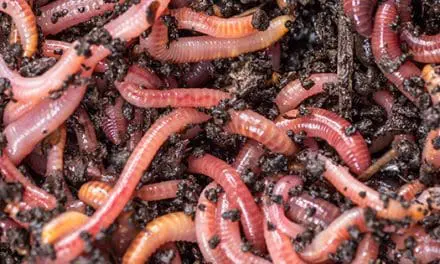Over-consumption is the norm today, making nose-to-tail recipes more vital than ever. This sustainable, eco-friendly approach uses every part of the animal, not just the usual cuts.
Nutritious and flavorful parts like the heart, liver, and kidneys are often overlooked but can be delicious when prepared right. In uncertain times, stretching your food supply while enjoying hearty, healthy dishes is essential.
Nose-to-tail recipes have been practiced by many cultures and were a staple for our ancestors. Embracing this method honors their resourcefulness and helps us value what we consume.
Many of the recipes I’ll share in this article come from this guide. It’s a lost survival food resource featuring over 126 forgotten survival foods, and I truly believe it’s an essential addition to any survival stockpile.
Nose-to-Tail Recipes from Beef
It’s no secret that most people love a good steak. However, many of us hesitate to pay the high price for them. While it’s tough to beat AAA-grade sirloin, the recipes below might make you reconsider your meal plan.
Grilled Beef Heart 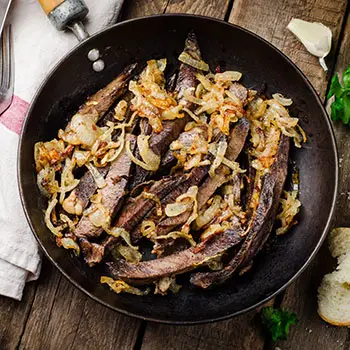
A Grilled Beef Heart offers a texture and taste similar to a good steak. You’re sure to love this dish!
Ingredients:
- 1 beef heart
- ¼ cup honey
- ¼ cup red wine vinegar
- ½ to 1 cup cooking or coconut oil
Directions:
Rinse the beef heart thoroughly with cold water and pat it dry. Slice the beef heart in half, removing any visible strings, arteries, or veins. Trim off any excess fat and set it aside for later.
Marinate the heart overnight in honey and vinegar, adding salt and pepper to taste. Sprinkle the beef heart with salt and pepper, then cook in halves or quarters.
In a skillet, heat a generous amount of cooking oil over high heat. Place the heart in the skillet and cook without moving it for 4-6 minutes per side. Remove the meat from the skillet and cover it with foil, letting it rest for at least 15 minutes.
Slice it into thin pieces and enjoy!
Related: Cow In A Jar
Braised Beef Heart 
Making a stew in the crockpot is one of the easiest ways to create a tender, flavorful beef heart stew.
Ingredients:
- 1 beef heart
- 1½ cups beef broth
- ½ tsp. salt, oregano, and garlic powder
- 2 tbsp. parsley
- 1 tbsp. unsalted butter
- 1 tsp. cornstarch
Directions:
Trim the heart, leaving a thin layer of fat. Cut the trimmed heart into small cubes, season with salt and pepper, and place them in the crockpot. Add the beef broth, garlic, and any other spices you like. Cover and cook on high for 4 hours. At this point, you can also add other vegetables like potatoes and carrots.
Strain the liquid into a saucepan, keeping the meat in the crockpot and setting it to keep warm. Add a tablespoon of unsalted butter, cornstarch, and 2 tsp. cold water to the strained liquid. Cook for about two minutes, whisking constantly until it thickens.
Remove from the stovetop. Plate the beef heart pieces and top with a generous amount of sauce. Enjoy!
Bone Broth 
Bone broth is a nutritious, flavorful addition to any homestead kitchen. It’s a great source of vitamins and works well in soups or stews. Plus, it’s simple to make and versatile!
Ingredients:
- Bones (beef, chicken, or whatever you have)
- Water
- Optional: Scraps, fats, and veggies for added flavor
Directions:
Add bones, scraps, fats, and any veggies you’re using to your crockpot.
Cover the ingredients with water and cook on low for at least 12 hours, adding more water as needed. Once done, let it cool slightly, then strain the broth through a fine strainer into a large pot or container.
Store the broth in airtight containers in the fridge for up to 4 days, or freeze it for later. You can also puree the veggies and mix them back in for extra flavor. Enjoy!
Nose-to-Tail Recipes from Pork
In a perfect world, everything would be wrapped in bacon. However, many other parts of a pig are worth a taste. Try some of these ideas.
Hot Griddled Pig Ears 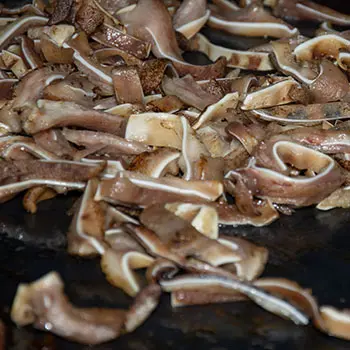
Pig ears are a delicious, crispy treat, whether served as a snack or part of a meal. They’re full of flavor and texture, perfect for trying something new with your homestead meats.
Ingredients:
- 2-4 pig ears
- 1-2 onions, cut in half
- 1 carrot
- Salt and pepper, to taste
Directions:
Bring water to a boil in a pot. Add the pig ears and par-boil for a few minutes to remove any impurities. Remove the ears, then place them in a fresh pot of water to cover them.
Add the onion, carrot, and any herbs you like, then bring it to a boil. Once boiling, add salt and pepper, reduce the heat, and let it simmer for 2 ½ hours.
Allow the ears to cool completely, and store the broth in a sealed container for later use. Once cool, heat a skillet and sear the ears, pressing them down often. Flip them until both sides are crispy and charred.
Serve immediately with your favorite sauces. Enjoy!
Related: Pig In A Jar
Pork Rinds – a.k.a. Pig Skin 
Pig skin is a great high-protein snack that can replace potato chips for a crunchy, flavorful treat.
Ingredients:
- Pork skin
- Salt
- Oil (for frying)
Directions:
Preheat the oven and line a baking sheet with parchment paper. Cut the pork skin into small pieces using shears or a sharp knife, trimming off any excess fat.
Arrange the skin pieces on the baking sheet and bake until they’re dry.
Once dried, remove them from the oven. In small batches, fry the skin pieces in 2 inches of oil, then place them on a paper towel to drain.
Add salt or your favorite seasonings, and enjoy!
Nose-to-Tail Recipes from Chicken
Chicken breast is a popular go-to meal for many, but with the rising costs, you may want to consider other options. Here are a few alternatives to try, and there are plenty more out there to explore.


